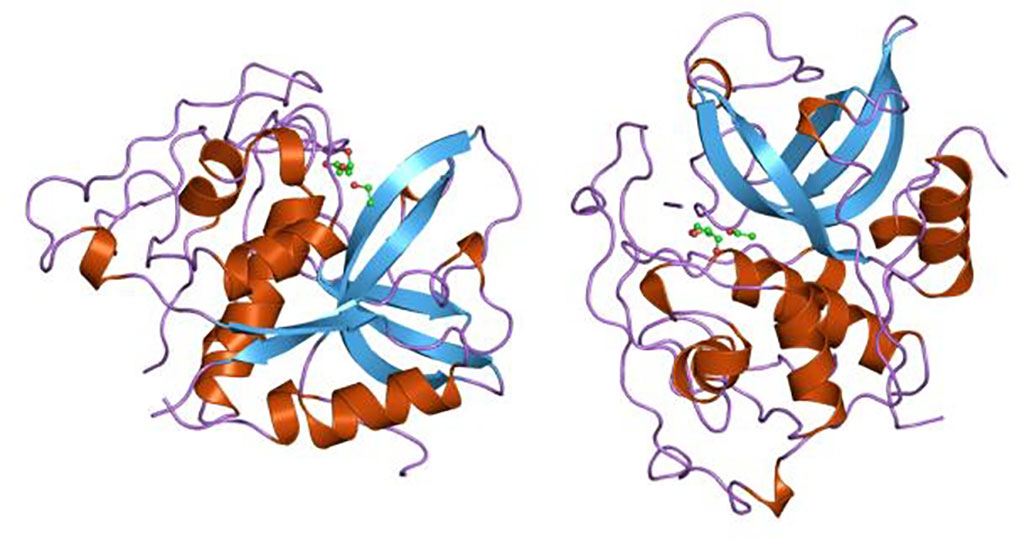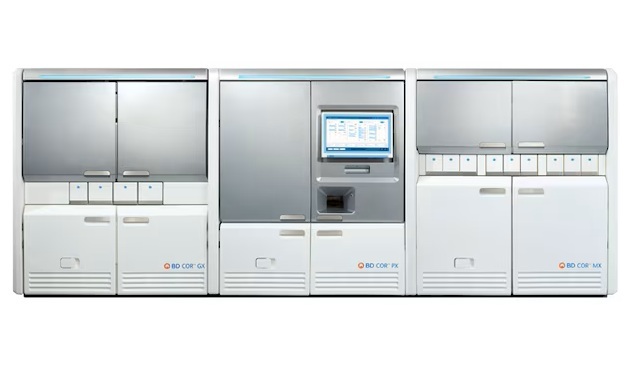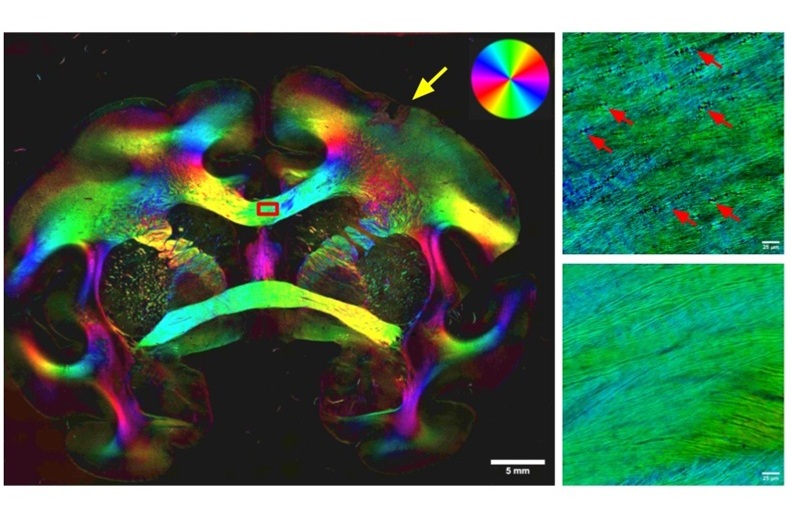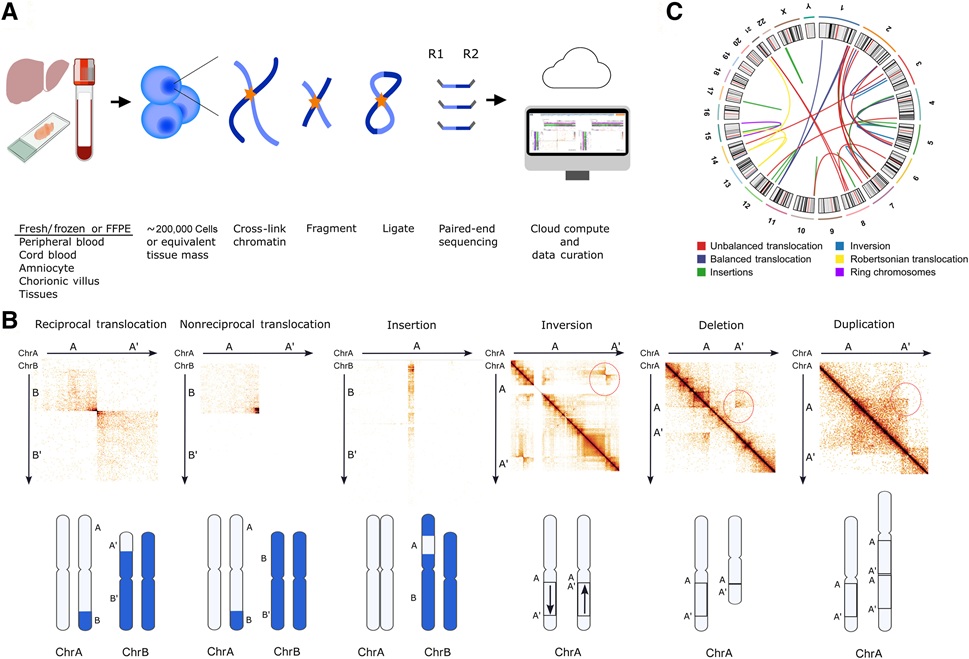An Ultrasensitive Assay for Measurement of Levels of Cathepsin B in the Blood
|
By LabMedica International staff writers Posted on 21 Apr 2021 |

Image: Representation of the molecular structure of the cathepsin B (catB) protein (Photo courtesy of Wikimedia Commons)
A novel digital enzyme-linked immunosorbent assay (ELISA) has been developed for the differential detection of cathepsin B from samples of serum or plasma.
Cathepsin B (catB) is a lysosomal cysteine protease expressed in various cells and organs, where it plays a role in protein degradation and turnover. Under pathological conditions, catB expression becomes upregulated in a variety of diseases including metastatic cancers, infections, traumatic brain injury, and neurological diseases. This upregulation is often associated with increased extracellular secretion via active or passive mechanisms. As such, the catB protein content is elevated above basal levels where it may have utility as a biofluid-based marker of diseases, injury, or trauma.
While biofluid samples such as plasma and serum contain catB, it is often difficult to obtain accurate measurements of the protein due to background interference and high variance, which limit the usefulness of catB as a peripheral biomarker. Thus, techniques for ultrasensitive protein detection that require low volumes of sample are necessary.
In this regard, investigators at Walter Reed Army Institute for Research (Silver Spring, MD, USA) developed a digital ELISA for differential detection of catB within less than five microliters of serum and plasma using the single molecule array (SiMoA) platform, which offers 1000-times more sensitivity and vastly reduced variance compared to colorimetric tests.
Results revealed that in buffer solution, the limit of detection (LoD) was between 1.56 and 8.47 picograms per milliliter depending on whether a two-step or three-step assay was used. After correcting for endogenous levels, the estimated LoD was approximately 4.7 picograms per milliliter in serum or plasma with the two-step assay. The lower limit of quantitation was about 2.3 picograms per milliliter in buffer and about 9.4 picograms per milliliter in serum or plasma, indicting the ability to measure small changes above endogenous levels within blood samples.
"Although cathepsin can be abundant in some tissues, accurate measurement in blood has been a challenge, especially if changes are expected to be small or sample is limited," said first author Dr. Bharani Thangavelu, a researcher in the brain trauma neuroprotection branch at the Walter Reed Army Institute for Research. "Our strategy uses an ultrasensitive technique to improve cathepsin B detection from small volumes of blood with little to no noise or impact from interfering substances."
The ultrasensitive ELISA for cathepsin B was described in the March 31, 2021, online edition of the journal ACS Omega.
Related Links:
Walter Reed Army Institute for Research
Cathepsin B (catB) is a lysosomal cysteine protease expressed in various cells and organs, where it plays a role in protein degradation and turnover. Under pathological conditions, catB expression becomes upregulated in a variety of diseases including metastatic cancers, infections, traumatic brain injury, and neurological diseases. This upregulation is often associated with increased extracellular secretion via active or passive mechanisms. As such, the catB protein content is elevated above basal levels where it may have utility as a biofluid-based marker of diseases, injury, or trauma.
While biofluid samples such as plasma and serum contain catB, it is often difficult to obtain accurate measurements of the protein due to background interference and high variance, which limit the usefulness of catB as a peripheral biomarker. Thus, techniques for ultrasensitive protein detection that require low volumes of sample are necessary.
In this regard, investigators at Walter Reed Army Institute for Research (Silver Spring, MD, USA) developed a digital ELISA for differential detection of catB within less than five microliters of serum and plasma using the single molecule array (SiMoA) platform, which offers 1000-times more sensitivity and vastly reduced variance compared to colorimetric tests.
Results revealed that in buffer solution, the limit of detection (LoD) was between 1.56 and 8.47 picograms per milliliter depending on whether a two-step or three-step assay was used. After correcting for endogenous levels, the estimated LoD was approximately 4.7 picograms per milliliter in serum or plasma with the two-step assay. The lower limit of quantitation was about 2.3 picograms per milliliter in buffer and about 9.4 picograms per milliliter in serum or plasma, indicting the ability to measure small changes above endogenous levels within blood samples.
"Although cathepsin can be abundant in some tissues, accurate measurement in blood has been a challenge, especially if changes are expected to be small or sample is limited," said first author Dr. Bharani Thangavelu, a researcher in the brain trauma neuroprotection branch at the Walter Reed Army Institute for Research. "Our strategy uses an ultrasensitive technique to improve cathepsin B detection from small volumes of blood with little to no noise or impact from interfering substances."
The ultrasensitive ELISA for cathepsin B was described in the March 31, 2021, online edition of the journal ACS Omega.
Related Links:
Walter Reed Army Institute for Research
Latest Molecular Diagnostics News
- New Biomarker Panel to Improve Heart Failure Diagnosis in Women
- Dual Blood Biomarkers Improve ALS Diagnostic Accuracy
- Automated Test Distinguishes Dengue from Acute Fever-Causing Illnesses In 18 Minutes
- High-Sensitivity Troponin I Assay Aids in Diagnosis of Myocardial Infarction
- Fast Low-Cost Alzheimer’s Tests Could Detect Disease in Early and Silent Stages
- Further Investigation of FISH-Negative Tests for Renal Cell Carcinoma Improves Diagnostic Accuracy
- First Direct Measurement of Dementia-Linked Proteins to Enable Early Alzheimer’s Detection
- New Diagnostic Method Detects Pneumonia at POC in Low-Resource Settings
- Blood Immune Cell Analysis Detects Parkinson’s Before Symptoms Appear
- New Diagnostic Marker for Ovarian Cancer to Enable Early Disease Detection

- Urine Test Detects Early Stage Pancreatic Cancer
- Genomic Test Could Reduce Lymph Node Biopsy Surgery in Melanoma Patients
- Urine Test Could Replace Painful Kidney Biopsies for Lupus Patients
- Blood Test Guides Post-Surgical Immunotherapy for Muscle-Invasive Bladder Cancer
- Mitochondrial DNA Mutations from Kidney Stressors Could Predict Future Organ Decline
- Blood Test Could Predict Bariatric Surgery Outcomes in Teenagers
Channels
Clinical Chemistry
view channel
VOCs Show Promise for Early Multi-Cancer Detection
Early cancer detection is critical to improving survival rates, but most current screening methods focus on individual cancer types and often involve invasive procedures. This makes it difficult to identify... Read more
Portable Raman Spectroscopy Offers Cost-Effective Kidney Disease Diagnosis at POC
Kidney disease is typically diagnosed through blood or urine tests, often when patients present with symptoms such as blood in urine, shortness of breath, or weight loss. While these tests are common,... Read moreHematology
view channel
ADLM’s New Coagulation Testing Guidance to Improve Care for Patients on Blood Thinners
Direct oral anticoagulants (DOACs) are one of the most common types of blood thinners. Patients take them to prevent a host of complications that could arise from blood clotting, including stroke, deep... Read more
Viscoelastic Testing Could Improve Treatment of Maternal Hemorrhage
Postpartum hemorrhage, severe bleeding after childbirth, remains one of the leading causes of maternal mortality worldwide, yet many of these deaths are preventable. Standard care can be hindered by delays... Read more
Pioneering Model Measures Radiation Exposure in Blood for Precise Cancer Treatments
Scientists have long focused on protecting organs near tumors during radiotherapy, but blood — a vital, circulating tissue — has largely been excluded from dose calculations. Each blood cell passing through... Read moreImmunology
view channel
Chip Captures Cancer Cells from Blood to Help Select Right Breast Cancer Treatment
Ductal carcinoma in situ (DCIS) accounts for about a quarter of all breast cancer cases and generally carries a good prognosis. This non-invasive form of the disease may or may not become life-threatening.... Read more
Blood-Based Liquid Biopsy Model Analyzes Immunotherapy Effectiveness
Immunotherapy has revolutionized cancer care by harnessing the immune system to fight tumors, yet predicting who will benefit remains a major challenge. Many patients undergo costly and taxing treatment... Read moreMicrobiology
view channel
15-Minute Blood Test Diagnoses Life-Threatening Infections in Children
Distinguishing minor childhood illnesses from potentially life-threatening infections such as sepsis or meningitis remains a major challenge in emergency care. Traditional tests can take hours, leaving... Read more
High-Throughput Enteric Panels Detect Multiple GI Bacterial Infections from Single Stool Swab Sample
Gastrointestinal (GI) infections are among the most common causes of illness worldwide, leading to over 1.7 million deaths annually and placing a heavy burden on healthcare systems. Conventional diagnostic... Read morePathology
view channel
Highly Sensitive Imaging Technique Detects Myelin Damage
Damage to myelin—the insulating layer that helps brain cells function efficiently—is a hallmark of many neurodegenerative diseases, age-related decline, and traumatic injuries. However, studying this damage... Read more
3D Genome Mapping Tool to Improve Diagnosis and Treatment of Genetic Diseases
Standard laboratory tests often fail to detect complex DNA rearrangements that underlie many genetic diseases. To bridge this diagnostic gap, researchers have developed a 3D chromosome mapping method that... Read more
New Molecular Analysis Tool to Improve Disease Diagnosis
Accurately distinguishing between similar biomolecules such as proteins is vital for biomedical research and diagnostics, yet existing analytical tools often fail to detect subtle structural or compositional... Read more
Tears Offer Noninvasive Alternative for Diagnosing Neurodegenerative Diseases
Diagnosing and monitoring eye and neurodegenerative diseases often requires invasive procedures to access ocular fluids. Ocular fluids like aqueous humor and vitreous humor contain valuable molecular information... Read moreTechnology
view channel
Portable Biosensor Diagnoses Psychiatric Disorders Using Saliva Samples
Early diagnosis of psychiatric disorders such as depression, schizophrenia, and bipolar disorder remains one of medicine’s most pressing challenges. Current diagnostic methods rely heavily on clinical... Read more
Cell-Sorting Device Uses Electromagnetic Levitation to Precisely Direct Cell Movement
Sorting different cell types—such as cancerous versus healthy or live versus dead cells—is a critical task in biology and medicine. However, conventional methods often require labeling, chemical exposure,... Read moreIndustry
view channel
Co-Diagnostics Forms New Business Unit to Develop AI-Powered Diagnostics
Co-Diagnostics, Inc. (Salt Lake City, UT, USA) has formed a new artificial intelligence (AI) business unit to integrate the company's existing and planned AI applications into its Co-Dx Primer Ai platform.... Read more






















